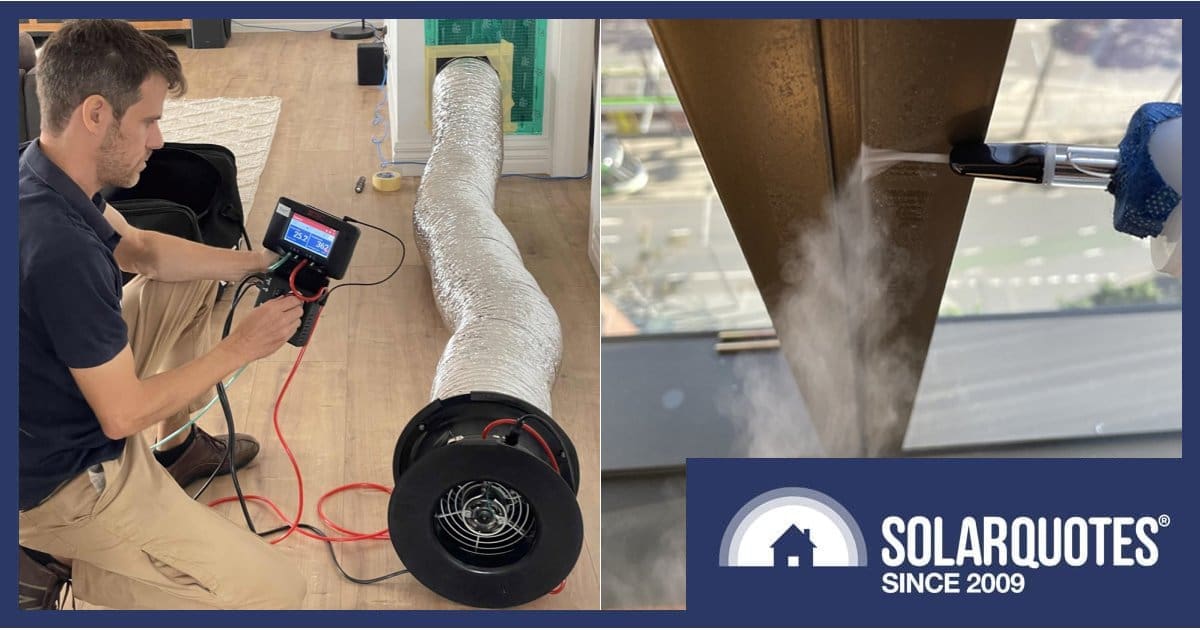
New homes in Australia are more comfortable and have lower energy bills as a result of marked improvements in air tightness says the CSIRO.
Heating and cooling Australian homes, particularly older buildings, is an energy intensive activity accounting for (depending on who you ask) around 36% of an average household’s energy consumption. While standards for energy efficiency have become stricter over time, millions of homes were constructed before minimum energy efficiency standards even existed.
The minimum energy standard for new homes is currently 7-stars in some states and 5 – 6 in others. But homes built before 2003 average 1.5 stars; and these homes can be a money pit when it comes to heating and cooling. One of the issues is air tightness. The more gaps there are – for example, under doors – the more heat is lost in winter and gained in summer; increasing energy bills by up to 20 per cent states the CSIRO. These gaps can also allow more dust, pollen and other pollutants to enter a home.
But air tightness has improved dramatically in recent years according to recent research from the organisation, which indicates new Australian homes are up to 50 per cent more airtight compared to the new homes tested in 2015. This was based on an assessment of 233 apartments and detached houses built in the last four years in Melbourne, Sydney Canberra, Brisbane and Adelaide; but excluded homes that were specifically designed for air tightness.
Improving, But Could Be Even Better
However, there is further room for improvement as leakages were found in most new homes. These were mainly associated with bathroom fans (especially combination ones), sliding doors and poor or missing door seals. Door seals were the biggest issue, identified in 65 per cent of houses tested.
Suggestions for addressing these issues include swapping out a fan with one featuring a damper that closes the fan when it’s not in use, using sealant to fill gaps in walls, and sealing strips fitted around doors and windows. Even a trusty door snake will help stop draughts under the door.
But sometimes you can have too much of a good thing.
“Some other homes, particularly apartments, were found to be extremely airtight, which can result in issues impacting building performance and resident health, if controlled ventilation is not included,” said Senior Experimental Scientist and project lead Michael Ambrose.
Without controlled ventilation, condensation and mould can form and carbon dioxide/monoxide levels increase, impacting the health of those living within such homes.
The CSIRO’s report has included recommendations for improving Australian building codes in relation to air tightness. Among them:
- implementing related standards in the National Construction Code (NCC).
- requiring controlled ventilation in new buildings, especially apartments.
- making air barriers mandatory in all new residences.
- providing training and educational resources to help builders identify cost-effective solutions.
The organisation also believes it would be valuable to display air tightness values on Nationwide House Energy Rating Scheme (NatHERS) certificates; noting what impact this has on a home’s star rating.
The full CSIRO report can be accessed here.
Energy Efficiency Is Important For Solar Households Too
It’s not unusual for households that have installed a solar power system to start using more electricity. After all, the electricity generated by solar panels is as cheap as chips when factoring in the cost of the system, and solar energy self-consumption is the name of the game these days.
But by stopping at a PV installation and not addressing building issues such as air tightness, a household will still be using more grid electricity at night, in the early part of the mornings and on overcast days – or unnecessarily draining a home battery. More solar energy will also be used during the day that could be directed to other activities.
By addressing draughts and leaks where possible, and attending to other energy-efficiency related issues, these actions can help solar households reap the maximum value from their PV investment.

 RSS - Posts
RSS - Posts



Speak Your Mind